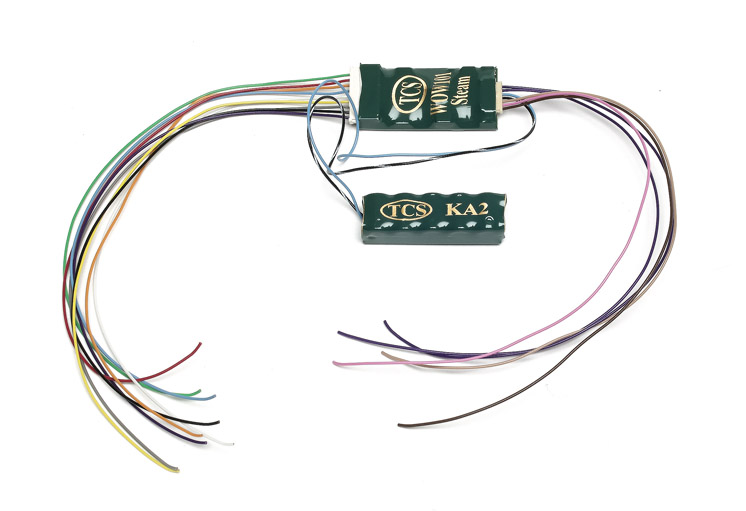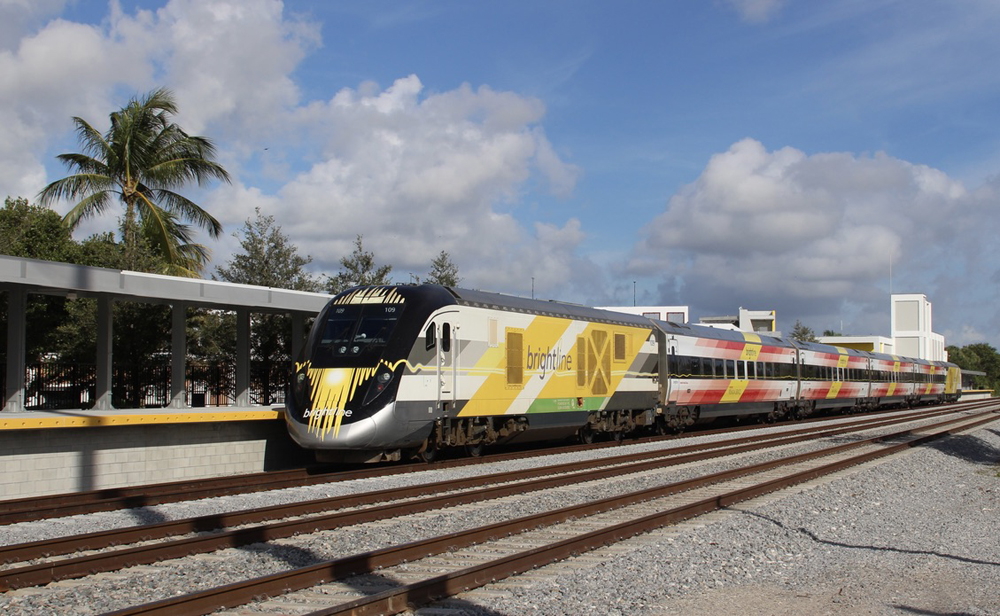Installation. The WOWSound components easily fit into most HO scale steam locomotive tenders. The decoder measures .22″ x .66″ x 1.35″ and the KA-2 measures .347″ x .458″ x 1.296″.
I installed the decoder and KA-2 into the tender of a DCC-ready Fox Valley Models HO scale Milwaukee Road 4-4-2. I used a nine-pin to eight-pin harness (available separately for $8.55) to connect the decoder to the DCC socket in the model’s printed-circuit board. I had to solder only the two speaker leads.
The decoder is optimized for 8Ω speakers (not included). As I found out the hard way, the speaker must also have at least a 1W power rating, or else it will be blown. TCS also recommends High Bass Reflex speakers, which I used on my second installation.
Sound. I was impressed by the decoder’s exhaust chuff effect. As the load on the engine increases, the chuffs get louder and sharper. As the locomotive slows, the chuffs become quieter and the snifter valves open. The user can trigger the sound of the cylinder cocks opening with the press of a function button.
The decoder’s timing of four chuffs per wheel revolution was the closet synchronization I’ve seen without having to install a mechanical cam on one of the drivers or driver axles. However, even after some fine-tuning, the timing varied slightly at some speeds. I didn’t find the difference that noticeable, especially at higher speeds. A cam wire is provided for those who wish to add one.
The whistles are all prototype recordings, including single- and five-chimes, and a distinctive Pennsylvania “banshee” whistle. The whistle sounds are split among three function keys. Functions 2 and 3 trigger a long or short blasts. Function 4 triggers a pre-recorded quill of the selected whistle. Other user-triggered sound effects include the bell, air pump, injector, and coupler sounds.
Programming. Pressing function 8 four times triggers Audio Assist mode, in which voice prompts guide a user through programming the decoder’s sound system. This eliminates the need to look up configuration variables (CVs) and enter CV values for those features, which include adjusting volume levels, selecting specific sound types, remapping function keys, and fine-tuning the chuff timing. The modeler will need to rely on conventional programming methods for non-sound features, such as the decoder address and momentum.
There is a comprehensive programming guide, as well as online videos specific to the WOWSound decoder, available for free at www.tcsdcc.com.
Locomotive operation. The decoder allows the throttle to toggle between sound mode and light mode. In sound mode, the throttle’s function keys control sound effects, and in light mode, the function keys control the decoder’s six lighting function outputs. Since the headlight function works in both modes, and is usually going to be the only function output needed for a steam locomotive, I never needed to switch the throttle out of sound mode. I think the lighting mode will be much more useful in the upcoming diesel version of the decoder.
Out of the box, the decoder is set for what TCS calls “prototype operation” with pre-programmed acceleration and deceleration momentum. Function buttons 6 and 7 also set and release the brake, including appropriate sounds, independent of the locomotive throttle. The braking rate is programmable and can be disabled for users who want traditional throttle control.
The WOWSound decoder features the smooth motor control of TCS non-sound decoders, including customizable speed tables and variable momentum, which let me set different momentum rates for specific speed ranges. The decoder’s slow-speed control is also exceptional.
The KA-2 Keep-Alive unit is a standout product all by itself. This capacitor module kept our 4-4-2 moving, and its sound and lighting constant, over a dead turnout and stretches of dirty track.
The TCS WOWSound decoder is a great combination of realistic sound and reliable locomotive performance.
Price: $109.95 (with Keep-Alive), $94.95 (decoder only)
Manufacturer
Train Control Systems
P.O. Box 341
Blooming Glen, PA 18911
www.tcsdcc.com
Features
- 44,100 samples per second at 16-bit resolution
- Light, medium, heavy, and articulated steam sounds
- Six lighting outputs
- Sounds include 2 generators, 18 bells, 40 whistles













